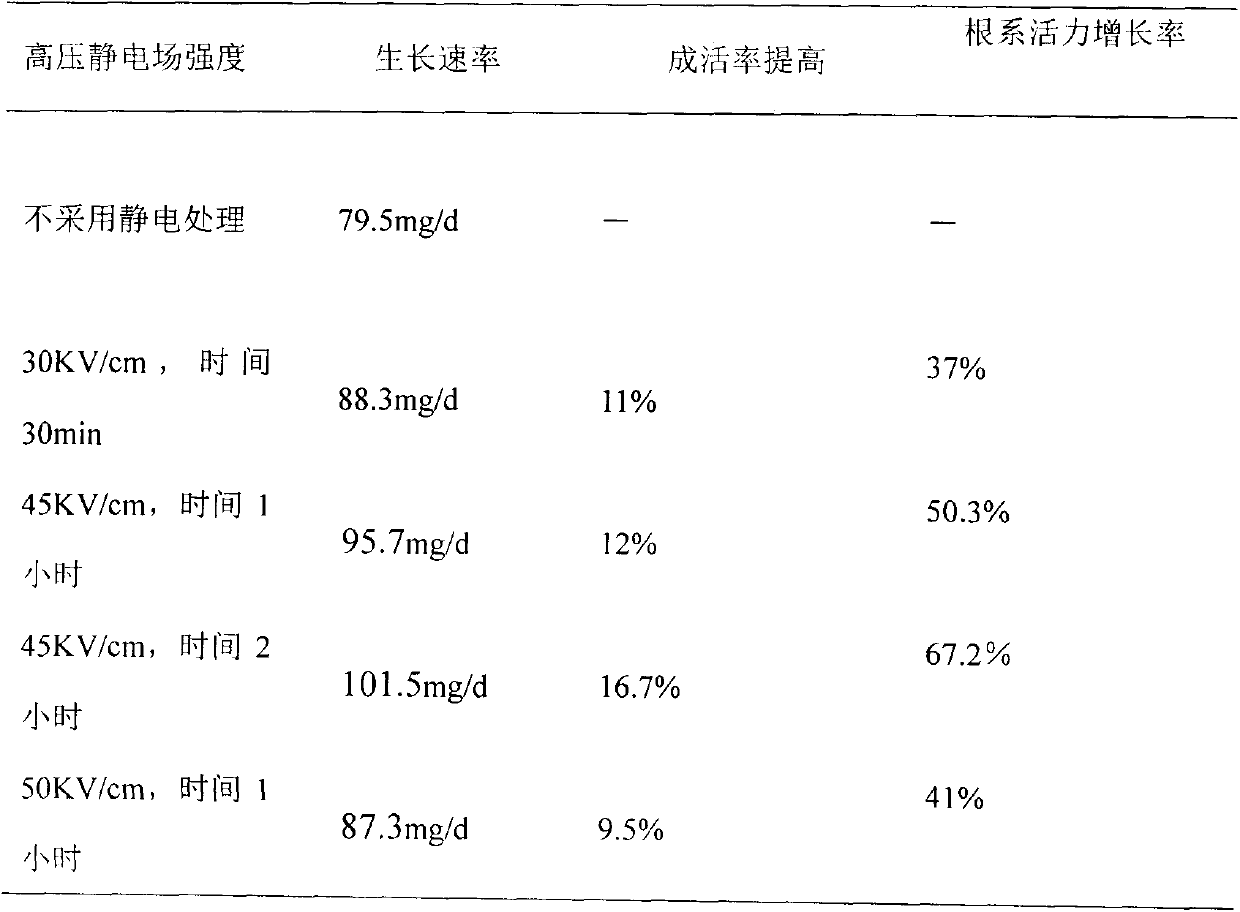Method for enabling woody plant material to form adventitious root and grow into own-rooted seedling
A technology of woody plants and self-rooted seedlings, applied in the field of woody plant propagation, can solve problems such as high cost and cumbersome tissue culture propagation
- Summary
- Abstract
- Description
- Claims
- Application Information
AI Technical Summary
Problems solved by technology
Method used
Image
Examples
Embodiment 1
[0031] On January 25, 2011, the dormant branches of Caryaillinoensis, a cultivated plant of the Juglandaceae family, were selected and cut into 20 stems with a length of 20 cm and a diameter of 10 to 15 mm. They were used as cuttings and placed in a plastic vest bag. Moss keeps moisture, and keep 2 / 3 of the space in the bag as air, and keep it away from light. Lateral buds began to germinate one after another in late March. At the beginning of April, the length of the young shoots reaches 3-5cm, and weak scattered light begins to penetrate at this time; remove too many new shoots, and only keep 2 new shoots on each cutting. On April 26, high-voltage electrostatic field (HVEF) treatment: the intensity was 45KV / cm, and the time was 2 hours; rooting powder was soaked, and the rooting powder was: 2 parts of α-naphthaleneacetic acid, 1 part of indole butyric acid, ABT7 rooting powder 0.5 parts of powder, 5 parts of potassium tetraborate, 3 parts of potassium dihydrogen phosphate, ...
Embodiment 2
[0034] On February 7th, 2012, the wild plants of the Rosaceae Rubuscoreanus stolons were selected, cut into 50 stems with a length of 15 cm, and placed in a plastic waistcoat bag as cuttings. Keep 2 / 3 of the space in the bag as air, and keep it away from light. Open the plastic vest bag once a week to check and ventilate once a week, spray moisture, and the lateral buds will start to germinate in late March. When the length of the young shoots reaches 3 cm, weak scattered light begins to penetrate; remove too many new shoots, and only keep 2 new shoots on each cutting. On April 3, the high-voltage electrostatic field (HVEF) treatment: the intensity was 45KV / cm, and the time was 2 hours; the rooting powder was soaked, and the rooting powder was: 2 parts of α-naphthaleneacetic acid, 1 part of indole butyric acid, ABT7 rooting powder 0.5 parts, 5 parts of potassium tetraborate, 3 parts of potassium dihydrogen phosphate, and 10.5 parts of vitamin B. Soak the lower part of the cut...
PUM
 Login to View More
Login to View More Abstract
Description
Claims
Application Information
 Login to View More
Login to View More - R&D
- Intellectual Property
- Life Sciences
- Materials
- Tech Scout
- Unparalleled Data Quality
- Higher Quality Content
- 60% Fewer Hallucinations
Browse by: Latest US Patents, China's latest patents, Technical Efficacy Thesaurus, Application Domain, Technology Topic, Popular Technical Reports.
© 2025 PatSnap. All rights reserved.Legal|Privacy policy|Modern Slavery Act Transparency Statement|Sitemap|About US| Contact US: help@patsnap.com


